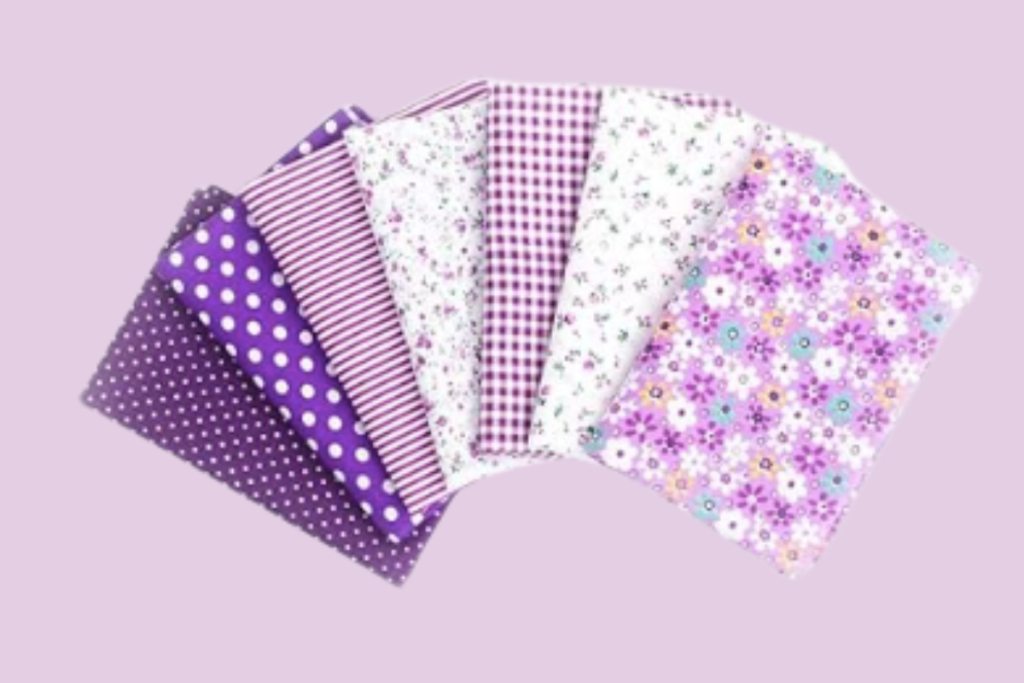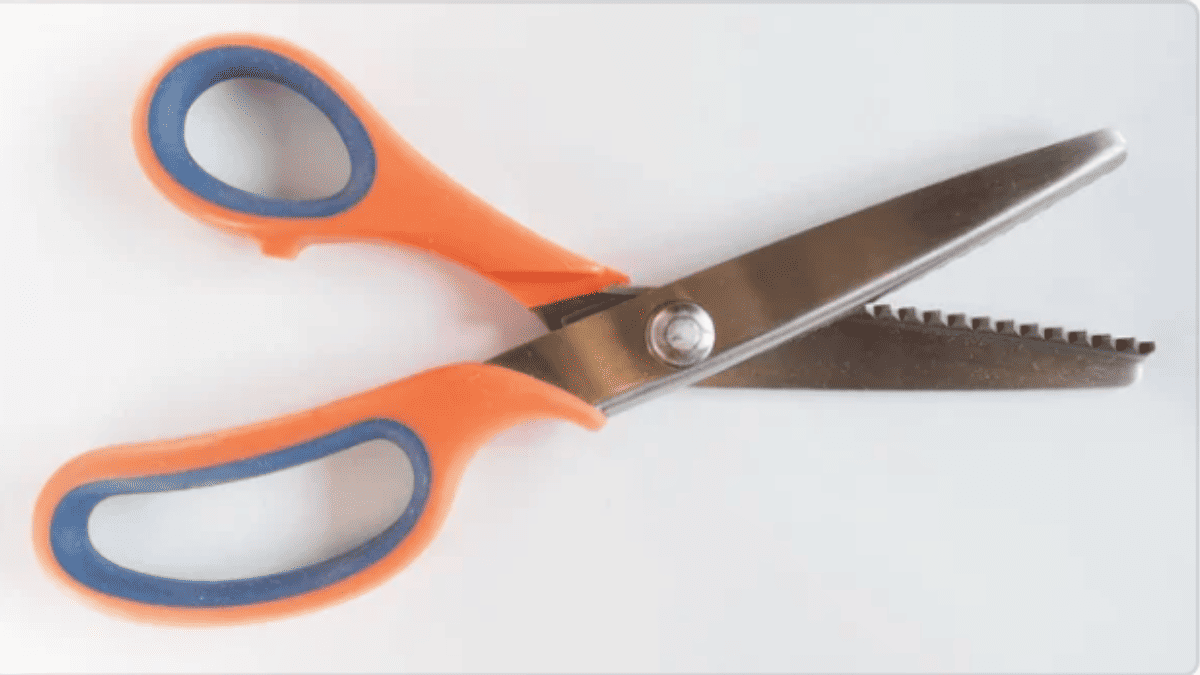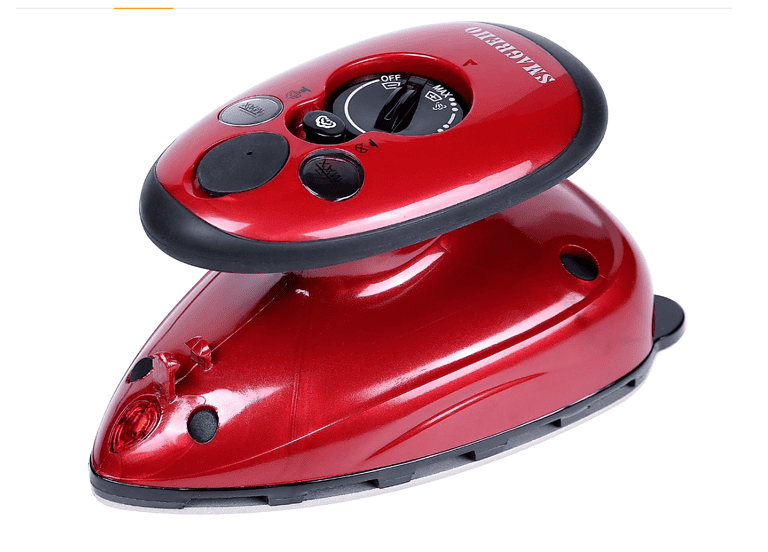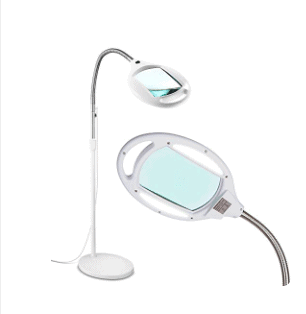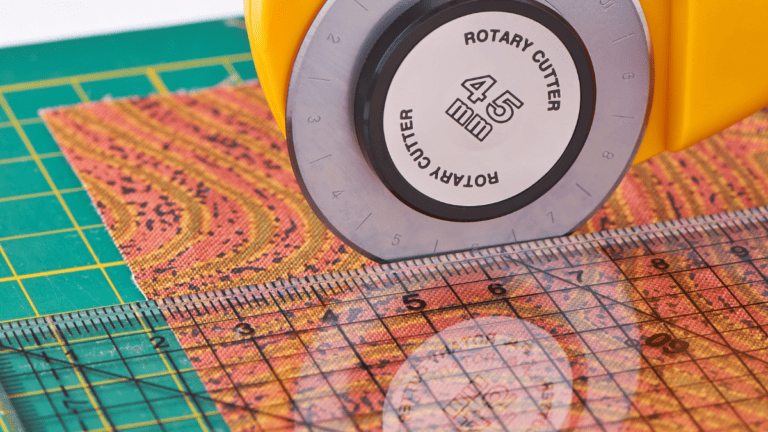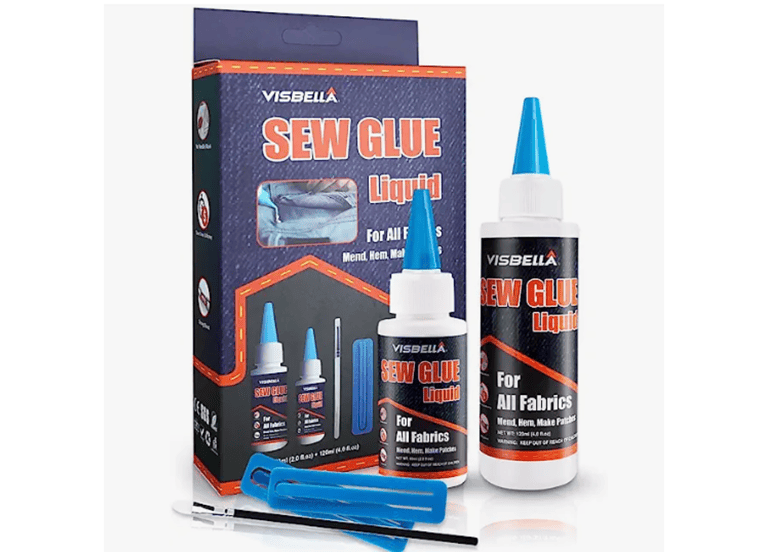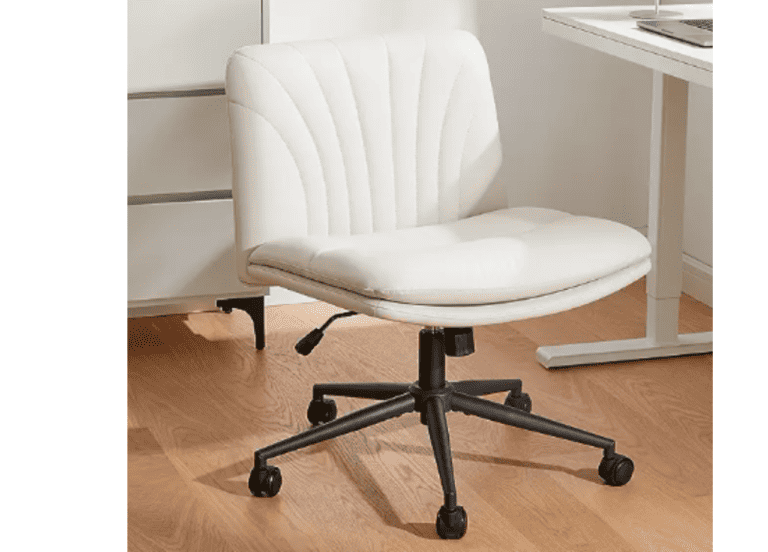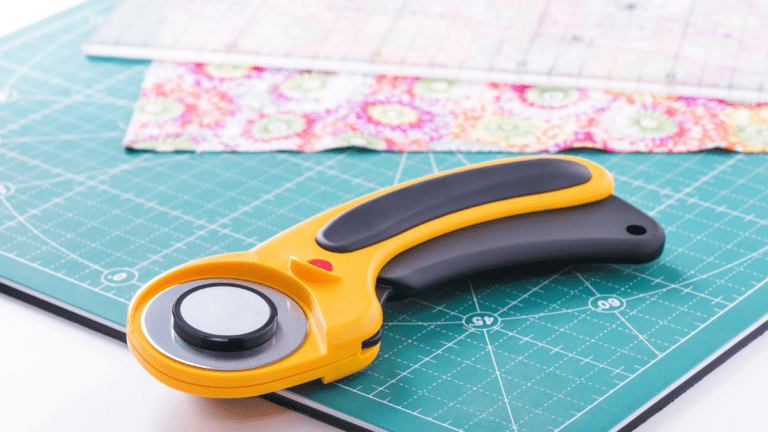What Are Pinking Shears? Easy Comprehensive Guide
What are Pinking shears? Those peculiar-looking scissors with zigzag blades, are a versatile tool used primarily in sewing and crafting. They are designed to create decorative edges on fabric or prevent fraying by cutting the cloth edges in a zigzag pattern.
These unique shears have serrated blades that leave behind a distinct sawtooth edge, adding a touch of flair to any project.
The main purpose of pinking shears is twofold: to enhance the appearance of fabric edges and to prevent fraying. When you use regular scissors or make straight cuts along the fabric’s edge, it tends to fray over time, resulting in loose threads hanging from the cut edge.
However, when you employ pinking shears, the sawtooth blade design helps minimize fraying by shortening the length of the frayed thread. This is crucial when answering the questions What Are Pinking Shears?
This makes them particularly useful for delicate fabrics like silk or satin where unraveling can be more noticeable.
Table of Contents
Pinking Shears History
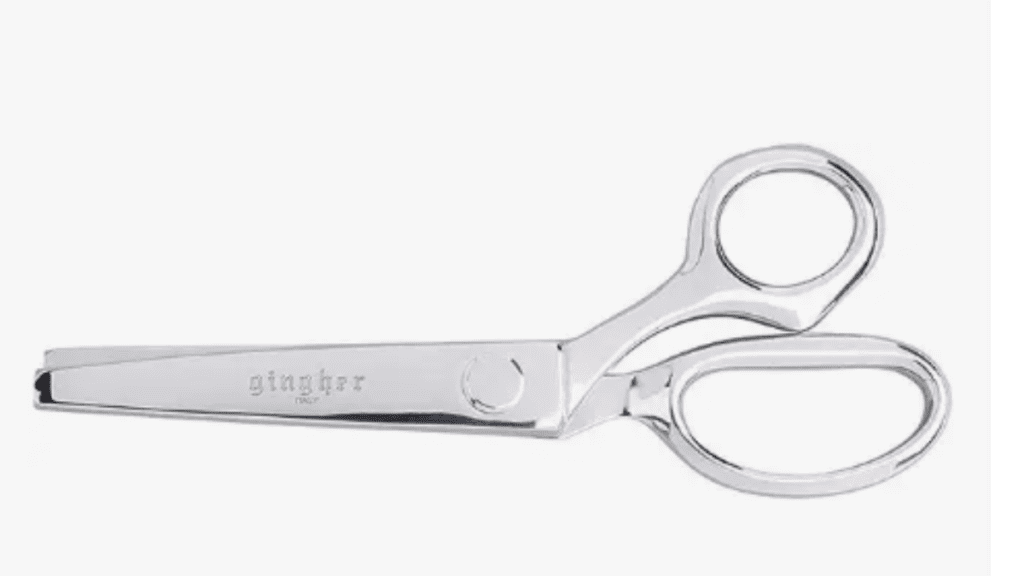
The fascinating history of pinking shears traces back to 18th-century France. The term “pinking” comes from the Dutch word “pink,” which means “small” or “tiny.”
Originally, these shears were called “punching” as they were used for creating small holes or perforations in leather rather than cutting fabric. Did you know that when you asked the question What Are Pinking Shears?
However, it was during the 19th century that pinking shears gained popularity among seamstresses as a means to prevent fraying while adding decorative touches.
The earliest versions had straight blades with tiny triangles cut out along one side for added grip and leverage while cutting through heavy fabric.
As their versatility became evident across various textile projects, specialty shears emerged designed specifically for different purposes such as trimming outside curves or pattern pieces.
Over time, pinking shears underwent several improvements, including the introduction of ball joints for smooth cutting, comfortable handles with soft grips, and the option of electric or battery-powered models.
Today, you can find an array of pinking shears to suit different needs in fabric stores or online platforms.
So next time you’re working on a sewing project and want to add some flair or prevent fraying, don’t forget to reach for those trusty pinking shears with their zigzag edge. They might just be your secret weapon in achieving that perfect finish.
What are Pinking Shears?

Pinking shears, those fascinating tools that add a touch of artistry to our crafting and sewing projects, have a unique anatomy that sets them apart from regular shears or scissors. Let’s take a closer look at the various components that make up these distinctive cutting instruments.
The first thing you’ll notice about pinking shears are the blades. Made from high-quality stainless steel, they are typically longer and thicker than those found on regular shears. Did that help answer the question What Are Pinking Shears?
What truly distinguishes them is their serrated edge with a zigzag pattern resembling tiny saw teeth. This serration is what allows pinking shears to create those charming decorative edges on fabric or paper.
Moving down to the handles, comfort is key when using pinking shears for extended periods. Many models feature specially designed ergonomic handles with soft grips that fit comfortably in your hand.
These handles provide better control and minimize fatigue during use. Additionally, some pinking shears have offset handles, which means they are not aligned but instead slant away from each other slightly.
This design aids in maneuverability when cutting through layers of fabric. The pivot point plays an essential role in how pinking shears work effectively. This is big when it comes to knowing What Are Pinking Shears.
Positioned at the center where the two blades meet and rotate, it ensures a smooth cutting motion while maintaining precision. A well-functioning pivot point combined with sharp serrated blades allows you to effortlessly cut through various materials without snagging or jamming.
Unique Zigzag Cutting Edge for Creating Decorative Edges

The defining feature of pinking shears is undoubtedly their zigzag cutting edge – an attribute cherished by crafters and sewists alike for its ability to add flair and visual interest to their projects.
Rather than providing a plain straight cut like typical scissors or shears would offer, pinking shears leave behind a distinct zigzag pattern.
This zigzag pattern is achieved through the careful alignment and spacing of the serrated teeth along the blades.
When you open and close the shears, these teeth interlock with each other, creating sharp peaks and valleys as they cut through fabric or paper.
The result? Delightful pinked fabric edges that not only look visually appealing but also serve a practical purpose.
Importance of Serrated Blades in Preventing Fabric Fraying
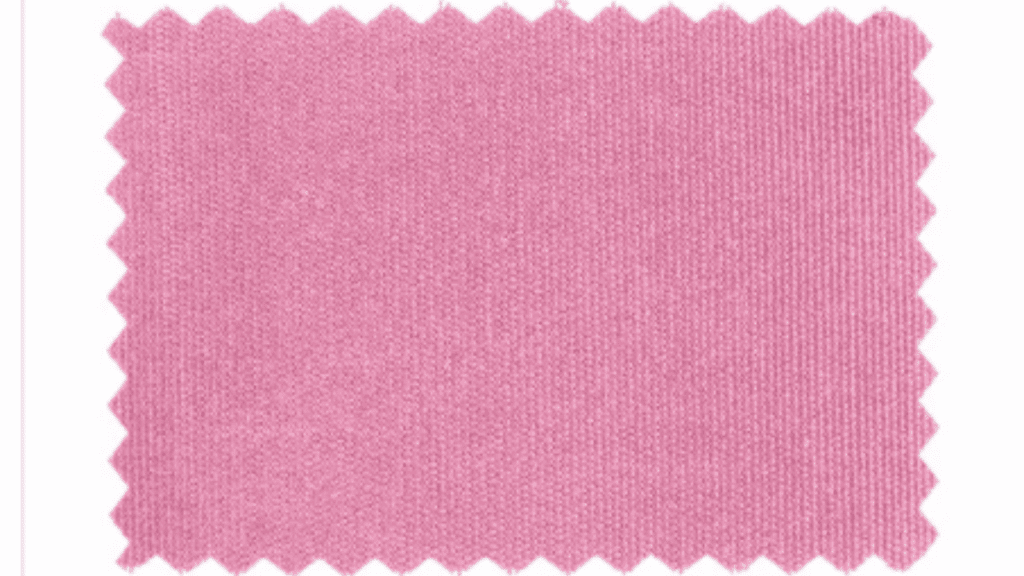
One of the primary advantages pinking shears have over conventional scissors is their remarkable ability to prevent fabric fraying. This is made possible by their serrated blades which work their magic on fabric fibers when cutting.
When you use regular shears, especially on delicate or loosely woven fabrics, you may notice that the cut edge starts to fray over time.
However, when pinking shears are employed, those tiny sawtooth serrations not only create an eye-catching zigzag pattern but also help bind and secure the fabric threads together. This prevents fraying by reducing the exposure of individual fibers at the cut edge.
The serrated blades of pinking shears enable them to grab onto multiple layers of fabric with each cut, ensuring a clean and controlled edge without pulling or distorting the material.
Whether you’re working on a sewing project that requires seam allowances or simply trimming raw edges, using pinking shears can save you from having to finish those edges separately with serging or hemming techniques.
To maintain your pinking shears’ excellent performance in preventing fraying, it’s crucial to keep those stainless steel blades sharp and well-maintained. A small drop of oil applied at the pivot point regularly can ensure smooth movement while cutting.
If your blades start to dull over time due to extensive use, gently rubbing them with steel wool can remove any buildup or burrs that may affect cutting precision.
Pinking shears possess a unique design and functionality that sets them apart from traditional scissors.
Their anatomy, which includes serrated blades with a zigzag cutting edge, ergonomic handles, and a well-designed pivot point, allows for precise cutting and decorative finishes.
Moreover, their serrated blades play a critical role in preventing fabric fraying, making them indispensable tools in any sewing or crafting enthusiast’s collection.
Types of Pinking Shears

Traditional Pinking Shears Scissors
When it comes to traditional pinking shears, the word “stainless steel blades” should ring a bell. These durable blades are designed to withstand the test of time, ensuring longevity and consistent cutting performance.
With different blade lengths and widths available for various applications, you can easily find the perfect pair that suits your needs.
A shorter blade might work well for intricate details or smaller projects, while a longer blade provides efficiency when working on larger pieces of fabric. Moving on to handle styles, there are several options to consider.
The classic straight handle design is widely popular due to its simplicity and ease of use. However, offset handle pinking shears offer an ergonomic grip that reduces strain on your hand during extended use.
These handles usually have a slight angle to provide better visibility while cutting. If comfort is a priority for you, investing in a pair with ergonomic handles is worth considering.
Electric Pinking Shears
Imagine effortlessly gliding through fabric without the need for manual force—electric or battery-powered pinking shears make this dream come true!
These modern tools have revolutionized the way we approach cutting tasks in sewing and crafting projects.
They employ electric motors or batteries to power their blades, making them a convenient alternative to traditional manual shears.
One advantage of these powered shears is their ability to effortlessly cut through even thick or multiple layers of fabric with precision and speed.
This makes them particularly handy when working with heavy-duty materials like denim or upholstery fabrics. However, it’s important to note that electric pinking shears may not excel in delicate tasks that require intricate cuts or fine detailing.
When considering electric pinking shears, keep in mind factors such as battery life (if battery-powered) and the availability of replacement blades.
Additionally, some models offer adjustable blade speeds to accommodate different fabrics.
Carefully weighing these considerations will help you make an informed decision and find the perfect pair for your needs. Remember, regardless of the type you choose, always prioritize safety by following proper handling procedures and keeping sharp edges away from fingers and delicate surfaces.
With a little care, your pinking shears will become an essential tool in your sewing kit or crafting arsenal for years to come.
Pinking Shears Purpose
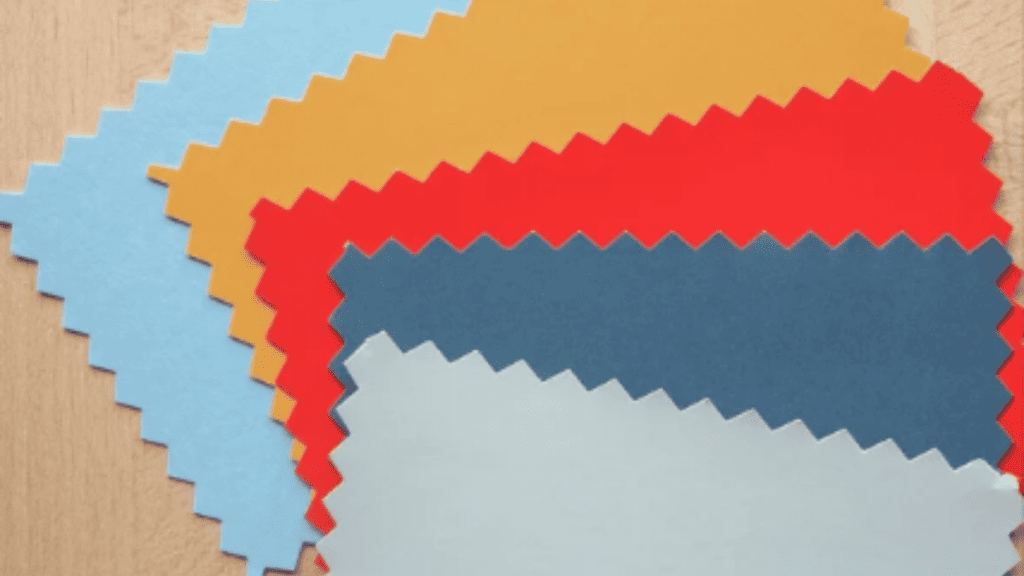
Pinking Shears Scissors
Pinking shears are an essential tool in the sewing kit of any avid seamstress or tailor. Their unique zigzag cutting edge allows for the creation of decorative edges on garments, linens, or accessories. By using pinking shears, you can add a touch of elegance and visual interest to your creations.
Whether you’re making a dress, a tablecloth, or even a set of curtains, incorporating a pinked edge can elevate the overall aesthetic appeal. Furthermore, pinking shears have a utilitarian function beyond aesthetics.
They excel at preventing fabric fraying in seams or raw edges. When you cut fabric with normal scissors, it leaves behind straight edges that are prone to unraveling over time.
However, with pinking shears, the serrated blades create tiny triangles along the fabric’s edge. These triangular notches effectively reduce fraying by limiting the length of the frayed thread.
Pinking Shears For Paper
Ask my kids if they can use my good pinking shearing for cutting paper and they will tell you heck no. Pinking shears are not limited to just fabric-related projects; I love scrapbooking and card-making, and use my pinking shears to add unique borders to your pages can give them a professional and polished look. Pinking shears can effortlessly create decorative edges on paper without requiring intricate cutting techniques.
Additionally, when it comes to DIY crafts like fabric flowers or felt ornaments, pinking shears can significantly enhance their visual appeal. By trimming the edges with pinking shears instead of regular shears, you introduce texture and dimension to these creations.
The neatly pinked edges give your handmade items a finished and professional appearance. ,
pinking shears serve multiple practical purposes in sewing and crafting projects alike. Whether you’re working with fabric or other materials, the ability to create decorative edges and prevent fraying is invaluable.
So, it’s always a good idea to have a pair of high-quality pinking shears in your sewing toolkit and a cheaper pair for crafting. Whether you’re dealing with delicate fabrics or heavy materials like denim or upholstery, choosing the best pinking shears for the job ensures clean and precise cuts every time.
How To Use Pinking Shears

When it comes to utilizing pinking shears, mastering the correct technique will ensure clean, precise cuts while preserving the integrity of your fabric.
To begin, always start with a piece of fabric that has been properly prepared and pressed.
Ensure that you are using pinking shears appropriate for your material’s weight – medium weight fabrics usually require standard pinking shears with a zigzag pattern.
To make clean cuts, hold the fabric steady with one hand while using your dominant hand to guide the pinking shears along the desired cutting line.
It is crucial to maintain a consistent cutting rhythm and apply gentle pressure throughout, avoiding any sudden jerking or pulling motions.
Remember, these specialty shears are designed for cutting through multiple layers of fabric, so there’s no need to rush.
For best results when working on long stretches of fabric or curved edges, it is recommended to pause periodically and readjust your position rather than attempting to cut in one continuous motion. This will help you maintain control and prevent any accidental slips or uneven cuts.
How to Sharpen Pinking Shears
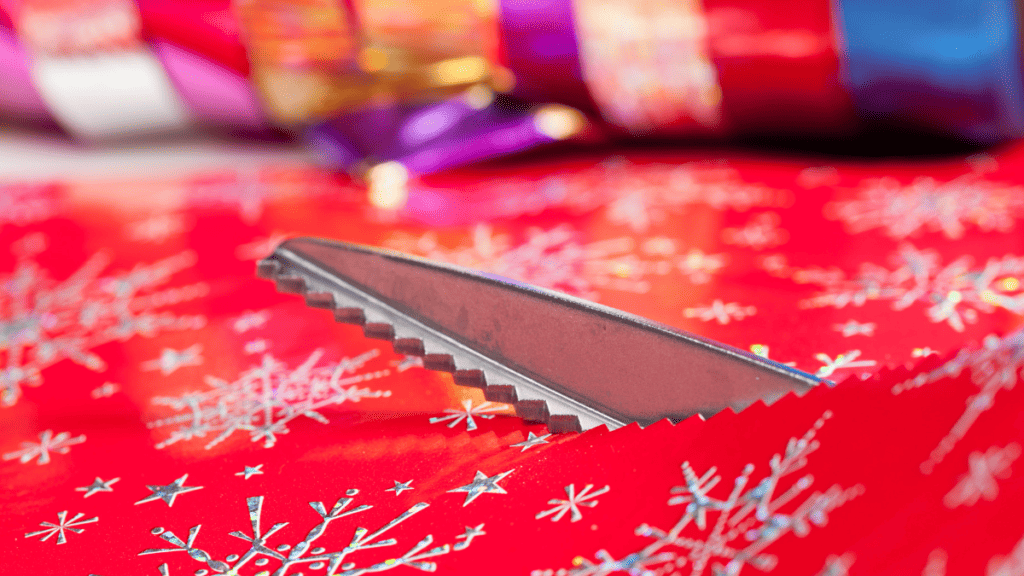
To keep your pinking shears in optimal condition and ensure their longevity, regular maintenance is key. Here are a few simple yet effective tips: 1. Cleanliness:
After each use, wipe off any accumulated lint or debris from both sides of the blades using a soft cloth or brush.
This helps prevent potential jamming and ensures smooth operation during future projects. 2. Blade Care: Apply a small drop of oil at the pivot point where the blades meet; this enhances their movement and reduces friction while cutting.
In addition, every few months or as needed, sharpening may be required depending on how frequently you use them. 3. Storage:
Store your pinking shears in a protective case or wrap them in aluminum foil to prevent the blades from getting damaged or dull.
Avoid exposing them to excessive moisture or extreme temperatures, as these conditions can affect their performance.
By following these maintenance practices, you can keep your pinking shears in the best possible shape, ready for any sewing project that comes your way.
Fun Facts about Pinking Shears
The Origin of the Name
Have you ever wondered why these unique cutting tools are called “pinking shears”? Well, prepare to be amazed! The term “pinking” actually derives from the Dutch word “pink”, which means a small, narrow zigzag.
Back in the day, when these shears were first introduced, they created a distinctive pinked fabric edge resembling this zigzag pattern.
So, next time you use your pinking shears, remember that their name has a charming historical connection.
The Art of Tiny Triangles
One fascinating aspect of pinking shears is their ability to transform plain fabric edges into a work of art with tiny triangles.
When you cut fabric with these sawtooth-bladed wonders, they create a series of small triangles along the edge.
These triangular notches are not just there for decoration; they serve an important purpose. By cutting tiny triangles into the fabric, pinking shears effectively reduce fraying and help maintain the structural integrity of your projects.
Pinking Shears For Fabric
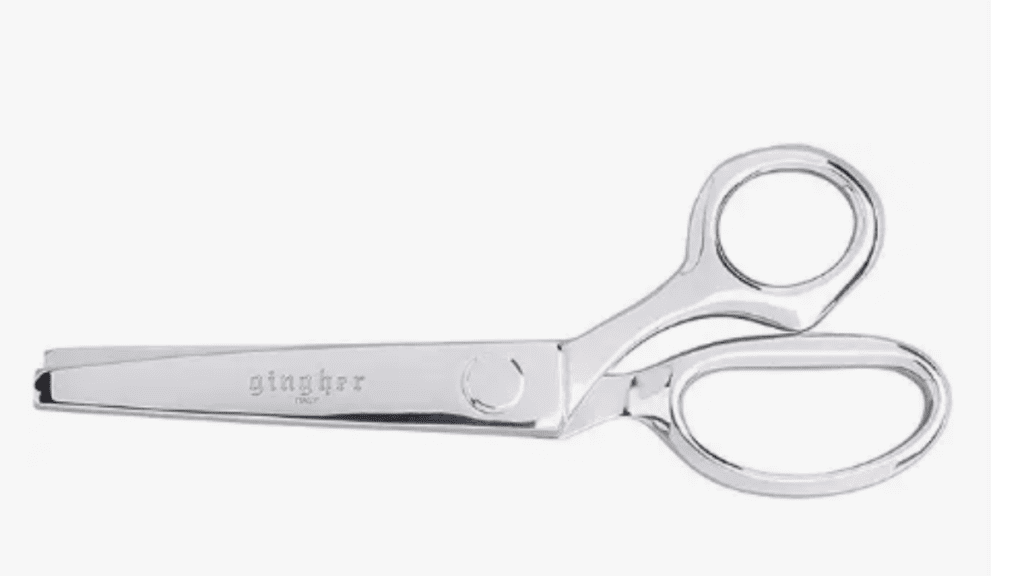
I have owned these pairs of pinking shears for years. I would recommend them to anyone who sews, and especially if you sew delicate fabric.
Other Scissors for Sewing
Fabric Giveaway
Enter our monthly fabric giveaway. Simply complete the tasks daily and you will be entered into the drawing. Winner will be randomly drawn on the first day of the month and notified via email
